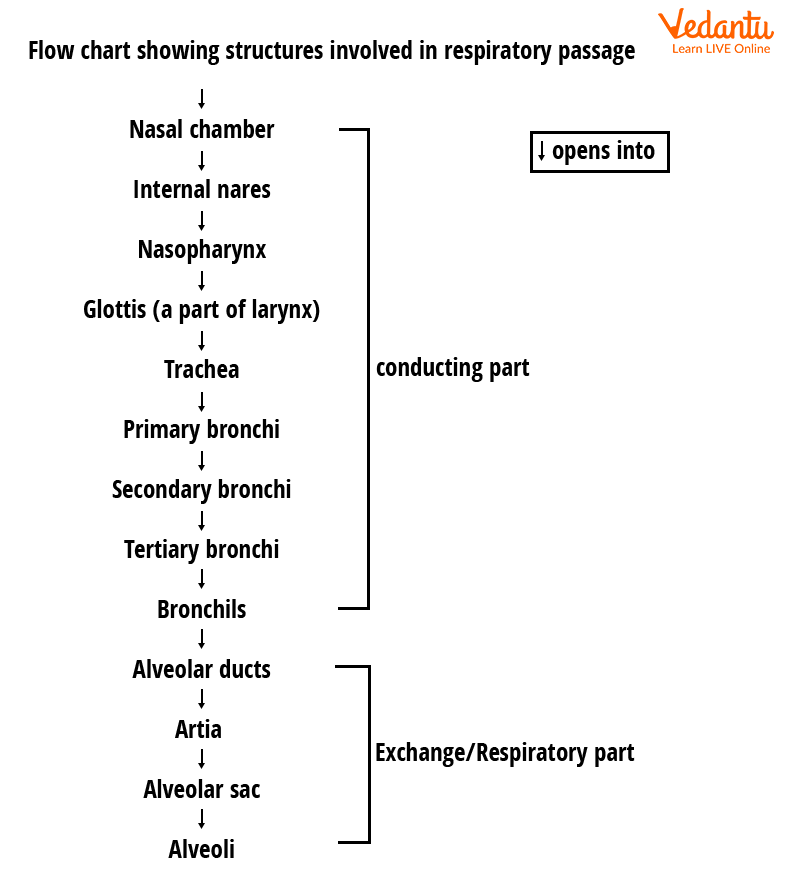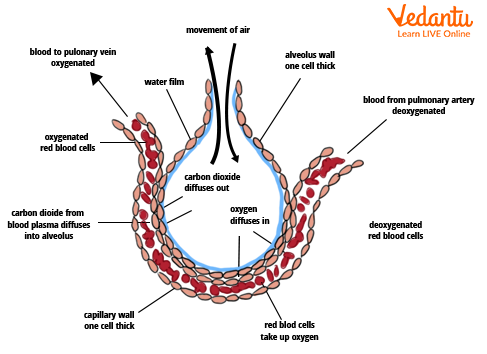




An Introduction to Gaseous Exchange
In the alveoli of the lungs, gas exchange is the process of changing one gas for another to maintain oxygen and carbon dioxide concentration gradients in the alveoli. The body requires oxygen for cellular respiration to produce ATP. Carbon dioxide, a byproduct of cell respiration, must be expelled from the body. Thus, the alveoli must transfer oxygen into the bloodstream and the carbon dioxide in the blood must permeate into the alveoli.
The procedure by which gases are exchanged from the alveoli to the bloodstream and vice versa is referred to as pulmonary diffusion. The lungs provide oxygen to the pulmonary capillaries, where it is transported to cells by haemoglobin. Carbon dioxide is delivered in Hgb to the lungs, where it is expelled, following cellular metabolism. As a result, proper operation of these systems is required for optimal gas exchange.
What is a Gaseous Exchange?
Gaseous exchange is the exchange of oxygen and carbon dioxide between the lungs and blood.
It is the biological process by which gases enter or exit the bloodstream across cell membranes.
Gas exchange occurs constantly between the blood and the cells throughout the body, as well as between the blood and the air inside the lungs.
Gaseous exchange is the exchange of oxygen and carbon dioxide between the lungs and blood.
It is the biological process by which gases enter or exit the bloodstream across cell membranes.
Gas exchange occurs constantly between the blood and the cells throughout the body, as well as between the blood and the air inside the lungs.
Flow Chart of Respiration

Flow Chart of Respiration
Breathing and Exchange of Gases
The dynamic flow of air and water over an animal's respiratory surface is referred to as breathing. In breathing, there are two processes: exhalation and inspiration. Exhalation causes muscle contractions, which reduces the volume of the tracheal system and forces air out. As the volume of the tracheal system recovers to its normal shape, inspiration occurs passively. The act of breathing might be voluntary or involuntary. Voluntary impulses arise from the cerebral hemisphere and are transferred to the breathing centre, whereas involuntary impulses originate from the breathing centre.
Inhaled oxygen travels first from the alveoli to the capillaries' blood, whereas carbon dioxide travels from the capillaries' blood to the air in the alveoli.
Gas Exchange Diagram

External Respiration
The exchange of oxygen and carbon dioxide between the mouth and the air in the lungs is known as external respiration. External respiration, often recognized as breathing, encompasses drawing air into the lung that is inhalation and as well as expelling air into the environment which is the exhalation process.
Internal Respiration
Internal respiration is the process of exchanging oxygen and carbon dioxide between the body's capillaries and alveoli. The blood vessels exchange gases with the alveoli’s gases which occur through the epithelium layer of alveoli.
Transport of Gases in Respiration
The capability of haemoglobin (in RBCs) to carry (transport) oxygen and carbon dioxide as blood flows through the body is referred to as transport.
Transport of Oxygen: The alveoli-capillary membrane allows oxygen to pass through and dissolve in the plasma. After that, it enters RBCs and attaches to haemoglobin molecules. Hgb carries both oxygen and carbon dioxide and transports the majority of it. Oxyhaemoglobin is formed when haemoglobin and oxygen mix. Oxyhaemoglobin synthesis is reversible, allowing Hb and oxygen to separate which allows oxygen to enter tissues. The capacity of the blood to carry oxygen is influenced by the level of dissolved oxygen in the plasma, the number of Hb, and the inclination of haemoglobin to bind with oxygen.
Transport of Carbon Dioxide: Carbon dioxide is carried in the bloodstream in three different forms: dissolved, bonded to haemoglobin, and as bicarbonate ions (HCO3-). Due to larger solubility coefficients, the dissolved form (7%) is more than oxygen (oxygen is 1.5 per cent) which diffuses in the presence of concentration gradients. RBCs absorb the majority of dissolved CO2. CO2 binds to proteins in the blood as well (primary haemoglobin in RBCs: 23 percent of blood CO2). HbCO2 is formed when CO2 and haemoglobin (Hb) mix (carbaminohemoglobin). Carbon dioxide is bonded to the globin region (no direct competition with oxygen for the binding site).
Conclusion
Cells respire by breaking down food molecules (such as sugar) and releasing the energy held in the food. To release the energy, they require oxygen. They also get rid of carbon dioxide produced from cells. This transport and exchange of gases occur in the blood.
Oxygen is a gas that enters the bloodstream through the lungs and goes to the heart, where it is circulated to all body cells via arteries. When oxygen interacts with haemoglobin and travels to the tissues, the chemical oxyhemoglobin is created. The produced carbon dioxide is expelled out which is known as the transport of gases.
FAQs on Gaseous Exchange and Transport of Gases for NEET
1. Write down the ways through which carbon dioxide is transferred inside the blood.
It comes in different forms in the blood:
Dissolved Form: Physical solution delivers 7% of CO2 in the dissolved form under ordinary temperature and pressure conditions.
Carbaminohemoglobin: Carbon dioxide, as carbanion compounds, reacts directly with Hb to generate an unstable molecule called carbanion compounds.
In the form of bicarbonate ions, carbon dioxide reacts with the water to generate carbonic acid, which divides into ions very rapidly. HCO3- enters RBCs in lung capillaries and then combines with H+ to generate H2CO3. Carbonic anhydrase breaks down H2CO3 into carbon dioxide and water, diffusing into the alveoli.
2. Which of the following isn't made up of diffusion membrane?
Alveolar squamous epithelium
Alveolar cuboidal epithelium
Basement membrane
Blood capillary endothelium.
(b) Alveolar cuboidal epithelium
Explanation: The mechanism by which gases travel through the respiratory membrane is known as diffusion. This diffusion of gases takes place through the alveoli’s membranes and passes into blood capillaries. The fluid coating of the alveolus (including surfactant), alveolar epithelium, epithelial basement membrane, interstitial space, capillary basement membrane, and capillary endothelial cells are the six layers of the respiratory membrane. Simple squamous epithelium makes up the alveoli. The diffusion membrane is made up of three layers: alveolar squamous epithelium, blood capillary endothelium, and basement material in between.
















